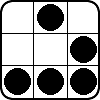very cool, and thanks, Ill look into these
I guess I should mention that Im an effects artist, sry about that. I'm using hlsl for shader programming, and I hope to explore directx more when I'm comfortable. shadertoy was one of the sites that got me interested in graphics programming. I hope to be able to make something to add to the awesomeness over there, sooner rather than later
I will be writing shaders for unity and unreal, and I have some exp with cg in unity. my short time goal is to write an hlsl shader that works and looks the same within 3ds max, unity, and unreal
What i mean by test code - Rendermonkey makes it very easy to write hlsl shaders, preview them, and then compile that working shader into an .fx file
I don't know how to create .fx files anywhere other than rendermonkey and am curious to know what the more experienced programmers are using to write and test their hlsl shaders, especially for dx12, since rendermonkey appears to be a dx9 thing - right now it very much feels like I need/rely on rendermonkey to create hlsl shaders
apologies if these questions belong elsewhere, i just saw the directx and xna forums, but thanks for any guidance






